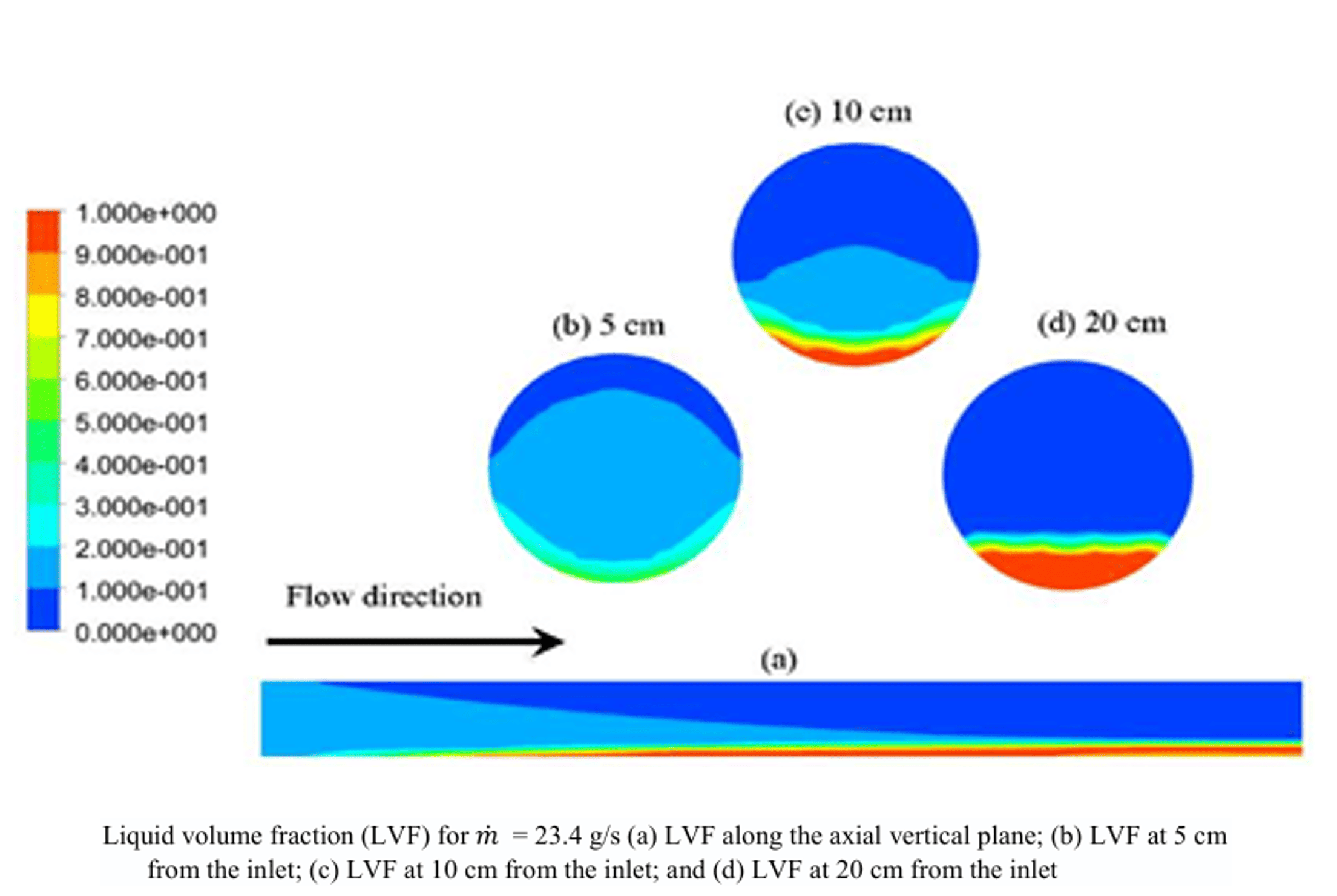-
-
March 14, 2025 at 5:30 am
sean910830
SubscriberI am currently attempting to simulate the development of two-phase flow inside a horizontal pipe located downstream of an expansion valve using CFX. The attached image shows the simulation results from reference [1], where the color bar represents the volume fraction of liquid water. The geometric dimensions, boundary conditions, and domain settings are as follows:
- Horizontal pipe dimensions: Diameter = 25 mm, Length = 2000 mm
- Inlet volume fraction: Water vapor = 0.999 / Liquid water = 0.001
- Inlet velocity: 2.1 m/s (converted from mass flow rate)
- Outlet pressure: 2.52 kPa
- Turbulence model: k-ε (applied to both fluids)
[1] https://dergipark.org.tr/en/pub/thermal/article/850672
- In this case, should the free surface model under fluid models be set to Standard or None? The User’s Guide states: “You can select the Standard free surface model if you are modeling multiphase flow with a distinct interface between the fluids.” However, there is no distinct interface in the pipe at the initial stage, so I am unsure how to configure this setting.
- For this case, should the interphase transfer under fluid pair models be set to Mixture Model or Free Surface? My concern is similar to the first question. Additionally, if the Mixture Model is chosen, how should the interface length scale be specified? The Theory Guide mentions that this value is user-defined, but I am uncertain about its exact meaning. Can it be considered as the droplet diameter?
- Inlet volume fraction: Water vapor = 0.999 / Liquid water = 0.001
- Horizontal pipe dimensions: Diameter = 25 mm, Length = 2000 mm
-
April 1, 2025 at 3:29 pm
rfblumen
Ansys EmployeeThe answer to the first question is, if there is a continuous liquid and vapor further down the pipe as shown, applying the standard free surface model would be more appropriate as it handles surface tension/drag between the phases.
The answer to the second question is free surface model should be used in this case. The Mixture model is more appropriate if there is entrainment of one phase into the other (see 7.5.1.3. The Free Surface Model in the CFX Modeling Guide). It doesn't appear there is entrainment in this case.
-
- 必須登入。



-
3150
-
1008
-
935
-
858
-
792

© 2025 Copyright ANSYS, Inc. All rights reserved.









